Application of ICP-MS to Study REEs Geochemistry of Structure Alteration Rocks in Southwestern Guizhou Province, China
-
摘要: 构造蚀变体(SBT)是沉积作用、构造作用和热液蚀变的综合产物。SBT作为黔西南地区金、锑、萤石等矿产的重要就位空间,金锑矿成矿与其密切相关。近年在黔西南地区发现了丰富的金资源量,关键在于SBT体系的提出及与之为核心的成矿模式的建立和应用。本文应用电感耦合等离子体质谱法(ICP-MS)分析了黔西南台地相区典型矿床的SBT样品,揭示稀土元素的地球化学特征。结果表明,不同矿区SBT的ΣREEs=49.55×10-6~271.72×10-6,含量变化较大,LREEs/HREEs=5.62~13.59,轻重稀土分馏明显,轻稀土富集;SBT对北美页岩和CI球粒陨石标准化配分模式图均表现为轻稀土富集的右倾型、“四分组”效应明显、强烈热液作用,为同一体系的产物;大厂至戈塘一线显示高的正铕异常,推测有两个方向含矿热液在此汇聚。本文系统对比了黔西南地区SBT稀土元素地球化学特征,反映该区成矿流体来源及演化,为本区微细浸染型金矿的成矿预测提供了依据。
-
关键词:
- 黔西南金矿 /
- 构造蚀变体 (SBT) /
- 金矿成矿作用 /
- 稀土元素 /
- 电感耦合等离子体质谱法
Abstract: The structure alteration rocks (named as SBT) is the product of sedimentation, tectonization, and hydrothermal alteration. It is the major body hosting many ore deposits such as gold, antimony, and fluorite in Southwest Guizhou. Recently establishment and application of a metallogenic model based on the SBT made a significant breakthrough in gold prospecting in Southwest Guizhou. Inductively Coupled Plasma-Mass Spectrometry (ICP-MS) was used to determine REEs concentrations of SBT samples from several typical ore deposits in Southwest Guizhou. The results show that: (1) ΣREEs concentrations of SBT from different locations are variable, ranging from 49.55×10-6 to 271.72×10-6 (in Table 1). (2) The SBT is enriched in LREEs, with LREEs/HREEs ranging from 5.62 to 13.59 (in Table 1). The REEs patterns normalized to North American shale and chondrite display enrichment of LREEs and distinct 'Four grouping' effect, indicating that they are the products of the same hydrothermal process (in Fig.2-Fig.4). The strongly positive europium anomalies in the Getang—Dachang area suggest the convergence of two hydrothermal ore fluid systems with different directions in this region. This study characterized the REEs content and its distribution in SBT from Southwest Guizhou Province, which is crucial for understanding the origin and evolution of ore-forming fluids, and provides guidance for gold prospecting in Southwest Guizhou Province. -
构造蚀变体 (SBT),产于中二叠统茅口组 (P2m) 和上二叠统龙潭组 (P3l) 或峨眉山玄武岩组 (P3β) 之间沉积间断面-不整合界面附近的一套深灰色中层强硅化角砾状硅质蚀变岩石及角砾状黏土岩或角砾状凝灰岩组合,由区域性构造作用形成并经热液蚀变的构造蚀变岩石,是沉积作用、构造作用和热液蚀变的综合产物,包含P2m顶部灰岩和P3l底部黏土岩 (或P3β底部) 两部分[1-3]。SBT作为黔西南地区金、锑、萤石等矿产的重要就位空间,金锑矿成矿与SBT密切相关,水银洞金矿赋存于SBT中Ⅰa-1矿体金资源量达69吨,为区内最大的金矿体,大厂锑矿也赋存其中。黔西南地区累计查明金资源量628吨,赋存于SBT中金约110吨,锑20万吨。近年来,区内新增金资源量246吨,取得贵州金矿找矿历史性突破,其关键在于SBT体系的提出及其以之为核心的成矿模式的建立和应用。
关于黔西南地区SBT稀土元素地球化学特征,前人已有一些研究,但主要集中在某一矿床,未开展区域上系统的SBT稀土元素地球化学研究。因此,本文拟以黔西南水银洞、戈塘、泥堡、雄武、贞丰背斜金矿、大厂锑矿的SBT为研究对象,采用电感耦合等离子体质谱法 (ICP-MS) 研究其稀土元素地球化学特征,为本区微细浸染型金矿的成矿预测提供依据。
1. 样品采集和分析
1.1 样品采集和处理
本次系统采集水银洞金矿、戈塘金矿、泥堡金矿、雄武金矿、贞丰背斜金矿、大厂锑矿SBT及围岩样品 (图 1)。水银洞金矿18件,其中SBT 14件,龙潭组3件,茅口组1件;戈塘金矿7件,其中SBT 3件,龙潭组2件,茅口组2件;泥堡金矿30件,其中SBT 13件,龙潭组15件,茅口组2件;雄武金矿8件,其中SBT 5件,龙潭组2件,茅口组1件;贞丰背斜金矿10件,其中SBT 9件,龙潭组1件;大厂锑矿6件,其中SBT 4件,茅口组1件,峨眉山玄武岩组1件。单件样品质量约1 kg,风干后加工至200目待分析。
1.2 ICP-MS分析测试方法
稀土元素的分析在贵州省地质矿产中心实验室完成。样品处理过程为:称取50 mg粉末 (200目以下) 于带不锈钢外套的密封样装置中,加入1 mL氢氟酸,在电热板上蒸干以去掉大部分SiO2,再加入1 mL氢氟酸和5 mL硝酸,盖上盖,置于烘箱中于200℃分解12 h以上,取出冷却后于电热板上低温蒸至近干,加入1 mL硝酸再蒸干,重复一次。最后加入2 mL硝酸和5 mL水,重新盖上盖,于130℃溶解残渣3 h,再取出,冷却后加入500 ng的Rh内标溶液,转移至50 mL离心管中,用ICP-MS测定稀土元素的含量[4-6]。稀土元素数据标准化分别采用北美页岩[7]、CI球粒陨石[8]。
2. SBT稀土元素地球化学特征
测量的SBT稀土元素组成及特征参数见表 1。从表 1可见,大厂、贞丰背斜、雄武、泥堡、戈塘、水银洞各矿床SBT中的稀土元素 (ΣREEs) 总量分别为120.3×10-6~401.8×10-6、7.4×10-6~316.5×10-6、31.0×10-6~79.6×10-6、15.0×10-6~511.3×10-6、129.7×10-6~171.0×10-6、9.2×10-6~315.7×10-6,变化较大,单件样品的稀土元素含量悬殊,部分矿区SBT继承了茅口组灰岩、龙潭组碎屑岩或峨眉山玄武岩,戈塘地区SBT的ΣREEs值远高于茅口组灰岩而低于龙潭组碎屑岩。大厂、贞丰背斜、雄武、泥堡、戈塘、水银洞各矿床SBT的LREEs/HREEs值分别为7.35~16.53、2.14~21.33、3.90~8.21、6.98~19.91、5.31~6.29、4.93~21.12,样品对北美页岩和CI球粒陨石标准化配分模式图均表现为轻稀土富集的右倾型、铈弱负异常、“四分组”效应明显,表现为强烈热液作用 (图 2、图 3)。样品北美页岩标准化铕表现为高正异常,CI球粒陨石标准化铕高负异常;部分样品Nd、Er、Lu明显富集或亏损,可能受强烈热液作用影响。
表 1 黔西南地区SBT稀土元素组成 (×10-6) 及特征参数Table 1. REEs compositions and characteristic parameters of SBT in Southwestern Guizhou Province样品编号 La Ce Pr Nd Sm Eu Gd Tb Dy Ho Er Tm Yb Lu ΣREEs LREEs HREEs LREEs
/HREEsLaN/YbN δEu δCe ZFSN-P3l 90.49 239.10 23.02 87.50 15.72 3.56 12.00 1.51 6.43 0.97 2.54 0.34 2.01 0.31 485.50 459.39 26.11 17.60 4.24 1.21 1.24 NB-P2m平均 6.03 11.49 1.38 5.24 0.93 0.23 0.74 0.11 0.53 0.10 0.27 0.04 0.28 0.04 27.41 25.30 2.11 12.01 2.04 1.28 0.95 NB-SBT平均 47.24 102.86 10.69 38.85 6.26 1.23 4.79 0.64 3.66 0.72 2.24 0.37 2.41 0.41 222.36 207.13 15.24 13.59 1.85 1.05 1.08 NB-P3β平均 79.04 174.69 18.40 68.06 11.09 1.85 7.72 1.01 5.54 1.05 3.16 0.49 3.13 0.48 375.70 353.12 22.58 15.64 2.38 0.93 1.09 NB-P3l平均 34.71 51.71 7.35 26.81 3.65 0.78 2.84 0.39 2.36 0.49 1.46 0.23 1.44 0.21 134.42 125.00 9.42 13.27 2.28 1.14 0.77 DC-P2m 29.99 57.36 7.70 30.32 5.24 1.52 4.16 0.63 3.57 0.67 1.98 0.31 1.94 0.32 145.71 132.12 13.58 9.73 1.46 1.53 0.90 DC-SBT平均 49.09 111.56 13.85 57.70 10.95 3.55 8.93 1.34 6.99 1.19 3.14 0.44 2.58 0.41 271.72 246.69 25.03 9.86 1.80 1.68 1.01 DC-P3β 30.52 67.39 9.44 42.19 8.82 2.53 5.19 0.50 1.85 0.29 0.89 0.11 0.74 0.12 170.59 160.88 9.70 16.58 3.87 1.72 0.94 SYD-ZK-P3l平均 47.78 89.32 12.00 46.98 8.19 1.86 5.60 0.68 3.22 0.55 1.59 0.22 1.34 0.21 219.56 206.14 13.42 15.36 3.36 1.28 0.88 SYD-ZK-P2m 57.90 117.80 14.19 54.13 10.04 2.89 8.18 1.18 5.79 0.90 2.31 0.32 1.84 0.28 277.74 256.95 20.80 12.35 2.96 1.49 0.97 SYD-ZK-SBT平均 30.73 50.79 6.77 26.18 4.74 1.07 3.67 0.49 2.47 0.44 1.26 0.19 1.19 0.20 130.19 120.28 9.91 12.14 2.44 1.20 0.83 GT-P3m平均 0.33 0.59 0.07 0.26 0.05 0.02 0.06 0.01 0.06 0.01 0.03 0.00 0.03 0.00 1.52 1.31 0.21 6.41 1.10 1.46 0.94 GT-SBT平均 32.47 57.17 7.44 29.51 4.73 1.20 3.80 0.48 2.56 0.48 1.49 0.21 1.36 0.19 143.10 132.52 10.58 12.53 2.26 1.33 0.87 GT-P3l平均 106.70 252.65 26.17 102.81 17.34 3.89 13.90 1.82 9.46 1.76 5.30 0.72 4.58 0.67 547.75 509.55 38.20 13.34 2.20 1.17 1.13 XW-P2m 10.27 10.24 2.01 7.99 1.76 0.48 1.62 0.24 1.39 0.30 0.85 0.13 0.78 0.12 38.18 32.75 5.43 6.03 1.25 1.32 0.53 XW-SBT平均 13.95 12.95 2.49 10.01 2.07 0.60 2.46 0.32 1.86 0.39 1.12 0.17 1.00 0.16 49.55 42.07 7.48 5.62 1.32 1.23 0.51 XW-P3l平均 59.49 125.80 13.80 51.65 8.53 2.22 10.43 1.15 6.32 0.94 2.59 0.41 2.55 0.39 286.25 261.48 24.77 10.56 2.20 1.09 1.04 罗甸晚二叠世辉绿岩 24.73 55.53 7.09 32.43 6.82 2.35 6.43 0.94 5.26 1.04 2.56 0.36 2.21 0.31 148.05 128.95 19.10 6.75 1.05 1.66 0.99 贵州西部玄武岩 77.10 142.40 19.40 79.40 14.03 3.41 10.09 1.75 8.65 1.44 3.76 0.55 3.38 0.53 365.89 335.74 30.15 11.14 2.15 1.34 0.87 P3β晴隆大厂玄武岩 39.05 86.25 9.47 44.54 9.61 2.68 8.93 1.27 6.58 1.13 2.49 0.21 1.49 0.22 213.89 191.58 22.31 8.59 2.47 1.35 1.06 中国辉长岩 25.00 48.00 5.40 24.00 5.00 1.60 4.70 0.74 4.00 0.80 2.10 0.32 1.90 0.30 123.86 109.00 14.86 7.34 1.24 1.55 0.98 中国东部泥质石灰岩 10.00 19.00 2.20 9.00 1.70 0.37 1.60 0.24 1.25 0.25 0.70 0.11 0.70 0.11 47.23 42.27 4.96 8.52 1.35 1.05 0.96 注:ZFBX—贞丰背斜金矿;NB—泥堡金矿;DC—大厂锑矿;SYD—水银洞金矿;GT—戈塘金矿;XW—雄武金矿。 3. 成岩成矿环境探讨
稀土元素由于具有相似的原子结构及地球化学性质,在地质作用中,往往以“整体”运移,除经受岩浆熔融外,稀土元素基本上不破坏它们的整体组成特征。同时,也可由于外界条件的变化,元素间细微差异而发生一定程度的“分馏”,它们的分馏情况能够灵敏地反映地质-地球化学作用的性质,有良好的示踪作用,因此,稀土元素如一组“同位素”一样,既被视为成岩成矿作用中良好的示踪剂,又可用来研究和查明成岩成矿环境、岩矿成因等。本文将根据黔西南地区SBT稀土元素地球化学特征,反映该区成岩成矿环境及成矿流体来源及演化。
3.1 流体性质及来源
为了系统开展稀土元素地球化学特征对比,本文收集了中国辉长岩、中国东部泥质石灰岩[9]、罗甸晚二叠世辉绿岩10个样品[10]、贵州西部玄武岩26个样品[11]、晴隆大厂玄武岩2个样品[12]的平均稀土元素含量数据。同时,对各个矿区茅口组、SBT、峨眉山玄武岩组、龙潭组样品的稀土元素含量求平均值,见表 1。
表 1数据显示,罗甸晚二叠世辉绿岩、中国辉绿岩、中国东部泥质石灰岩的 (La/Yb)N值分别为1.05、1.24、1.35,轻重稀土分馏不明显。SBT的 (La/Yb)N=1.32~2.44、茅口组 (La/Yb)N=1.10~2.96,龙潭组 (La/Yb)N=2.2~4.24,SBT、茅口组、龙潭组 (La/Yb)N较高,均有一定程度的轻重稀土分馏,可能与地层中含有一定量的凝灰质、玄武质碎屑有关。泥堡 (凝灰岩) 的 (La/Yb)N=2.38,轻重稀土分馏较明显;取自大厂的致密玄武岩 (La/Yb)N=3.87,重稀土明显亏损。
SBT的ΣREEs平均值为49.55×10-6~271.72×10-6,与泥质石灰岩相当,个别样品稀土总量较高,说明其物质构成复杂;LREEs/HREEs=5.62~13.59;铈的负异常或无异常 (δCe=0.51~1.08)。SBT北美页岩标准化模式曲线平坦,具有铕的正异常 (δEu=1.05~1.33),不同于中国东部泥质石灰岩,而与罗甸晚二叠世辉绿岩一致 (图 4a)。夹在茅口组和龙潭组之间有一层向东逐渐减薄的凝灰岩沉积层δEu=0.8~1.08,平均0.93,不具有铕的异常特征 (图 2c),说明凝灰岩不是SBT的铕异常的来源。大厂地区致密玄武岩 (图 3f) 重稀土明显亏损,不同于本次研究的任何地层稀土特征。因此,SBT是受构造热液蚀变作用形成,大气水和成岩过程中释放出来的水不能形成富含铕的热液,热液活动过程中应该有富含铕的流体的加入。研究表明,斜长石对铕的分配系数远远大于其他稀土元素,在各类岩浆岩中铕异常的产生常与斜长石的结晶有关[13],SBT中铕的正异常可能说明了来自深源的流体或经历了相对富含斜长石的源区。
区域上,SBT之下茅口组、摆佐组均有辉绿岩侵入体,岩床 (墙) 状辉绿岩分布在黔西北和黔南两个地区。黔西北辉绿岩侵入围岩层位自上泥盆统代化组至下二叠统茅口组,以茅口组一、二段之间居多,辉绿岩体的矿物成分与峨眉山玄武岩相同;黔南区辉绿岩侵入围岩层位均为下二叠统四大寨组中部,矿物成分主要为斜长石和辉石。来自深源的流体与茅口组或摆佐组的辉绿岩侵入体发生水-岩反应,长石分解释放的Eu2+在高温下比较稳定,从其他REE3+中分馏出来,在成矿流体中富集[14]。当流体运移到SBT中时,由于温度降低,Eu2+被氧化为Eu3+,并进入岩石中,从而形成明显的铕正异常。本次研究及夏勇[16]、张瑜等[15]研究也认为,具有正铕异常的流体, 来源于深部或至少经历过对富含斜长石源区的水-岩反应,而不是含矿地层 (以泥质岩类为主) 的改造热液。可见,SBT中稀土元素特征是茅口组灰岩、峨眉山玄武岩组凝灰岩、龙潭组泥质灰岩和深源流体相互叠加的结果,且具有区域分布特征。
3.2 铕的变化及对流体运移的指示
黔西南地区SBT均具有铕的正异常 (图 4),但异常程度不同,将δEu值从小到大排列依次为泥堡—贞丰背斜—水银洞—雄武—戈塘—大厂。以戈塘—大厂连线,泥堡和水银洞正好分布在该线的两侧,呈对称分布;线上SBT铕异常大,线两侧异常小;水银洞和贞丰背斜离线距相等,铕异常大小也相近;SBT铕异常大小与玄武岩分布区的远近没有关系,如大厂就在玄武岩分布区中,戈塘远离玄武岩,但它们的铕异常都较高。以上特征可能暗示来源于戈塘—大厂的南西和南东两侧的与富含斜长石的岩体发生水-岩反应后的深源流体,在戈塘—大厂连线附近汇集,从而造成了以大厂—戈塘为轴,轴上铕异常大、轴两侧铕异常小的特征 (图 5),同时也指示了黔西南大面积的成矿作用与峨眉山玄武岩没有直接的关系。成矿流体为富含Au-As-Sb-Hg-Tl-H2O-CO2-CH4-N2深源流体,Au-Sb共同迁移而又分别沉淀,Au沉淀成矿后相对更富含Sb的热液继续运移至最有利部位沉淀成矿[17],金锑矿床之间的空间关系,可能代表了成矿流体的运移方向;成矿流体运移方向的反方向可能具有较大的找矿空间;金锑矿床平面连线之间仍具有找金的潜力,锑矿床或锑矿化区域不太可能成金矿床。
![]() 图 5 贵州西南部地区金锑矿成矿流体运移方向示意图1—燕山期偏碱性超基性岩类;2—燕山期基性碱性岩类;3—金矿床 (点);4—汞矿床 (矿化点);5—铊-汞矿床;6—锑矿床 (点);7—金成矿区;8—锑成矿区;9—成矿流体运移方向;Ⅰ—灰家堡金成矿区;Ⅱ—泥堡金成矿区;Ⅲ—戈塘—洒雨金成矿区;Ⅳ—莲花山金成矿区;Ⅴ—雄武成矿区;Ⅵ—烂泥沟金成矿区;Ⅶ—板其—丫他金成矿区;Ⅷ—包谷地成矿区;Ⅸ—大厂锑成矿区。Figure 5. Migration direction of ore-forming fluids for gold-antimony deposits in Southwestern Guizhou Province
图 5 贵州西南部地区金锑矿成矿流体运移方向示意图1—燕山期偏碱性超基性岩类;2—燕山期基性碱性岩类;3—金矿床 (点);4—汞矿床 (矿化点);5—铊-汞矿床;6—锑矿床 (点);7—金成矿区;8—锑成矿区;9—成矿流体运移方向;Ⅰ—灰家堡金成矿区;Ⅱ—泥堡金成矿区;Ⅲ—戈塘—洒雨金成矿区;Ⅳ—莲花山金成矿区;Ⅴ—雄武成矿区;Ⅵ—烂泥沟金成矿区;Ⅶ—板其—丫他金成矿区;Ⅷ—包谷地成矿区;Ⅸ—大厂锑成矿区。Figure 5. Migration direction of ore-forming fluids for gold-antimony deposits in Southwestern Guizhou Province4. 结论
SBT作为黔西南地区金、锑、萤石等矿产的重要就位空间,金锑矿成矿与SBT密切相关。不同矿区SBT稀土配分模式的相似性显示为同一体系的产物,大厂、贞丰背斜、雄武、泥堡、戈塘、水银洞各矿床SBT中的ΣREEs和LREEs/HREEs变化较大,单件样品稀土含量悬殊,物质构成复杂。北美页岩标准化表现为高的Eu正异常。研究表明,SBT中稀土元素特征是茅口组灰岩、峨眉山玄武岩组凝灰岩、龙潭组泥质灰岩和深源流体相互叠加的结果,且具有特定的区域分布特征;区域上SBT稀土北美页岩、CI球粒陨石标准化配分模式图均表现为轻稀土富集的右倾型、“四分组”效应明显,表现为强烈热液作用。大厂至戈塘一线显示的高的正铕异常,可能代表了两个方向的含矿热液在此汇聚。
本研究通过采用高分辨率、高灵敏度的ICP-MS开展SBT系统的稀土元素地球化学的研究,指示了区域上成矿流体的来源和演化,为本区卡林型金矿的成矿预测提供了依据。
-
图 5 贵州西南部地区金锑矿成矿流体运移方向示意图
1—燕山期偏碱性超基性岩类;2—燕山期基性碱性岩类;3—金矿床 (点);4—汞矿床 (矿化点);5—铊-汞矿床;6—锑矿床 (点);7—金成矿区;8—锑成矿区;9—成矿流体运移方向;Ⅰ—灰家堡金成矿区;Ⅱ—泥堡金成矿区;Ⅲ—戈塘—洒雨金成矿区;Ⅳ—莲花山金成矿区;Ⅴ—雄武成矿区;Ⅵ—烂泥沟金成矿区;Ⅶ—板其—丫他金成矿区;Ⅷ—包谷地成矿区;Ⅸ—大厂锑成矿区。
Figure 5. Migration direction of ore-forming fluids for gold-antimony deposits in Southwestern Guizhou Province
表 1 黔西南地区SBT稀土元素组成 (×10-6) 及特征参数
Table 1 REEs compositions and characteristic parameters of SBT in Southwestern Guizhou Province
样品编号 La Ce Pr Nd Sm Eu Gd Tb Dy Ho Er Tm Yb Lu ΣREEs LREEs HREEs LREEs
/HREEsLaN/YbN δEu δCe ZFSN-P3l 90.49 239.10 23.02 87.50 15.72 3.56 12.00 1.51 6.43 0.97 2.54 0.34 2.01 0.31 485.50 459.39 26.11 17.60 4.24 1.21 1.24 NB-P2m平均 6.03 11.49 1.38 5.24 0.93 0.23 0.74 0.11 0.53 0.10 0.27 0.04 0.28 0.04 27.41 25.30 2.11 12.01 2.04 1.28 0.95 NB-SBT平均 47.24 102.86 10.69 38.85 6.26 1.23 4.79 0.64 3.66 0.72 2.24 0.37 2.41 0.41 222.36 207.13 15.24 13.59 1.85 1.05 1.08 NB-P3β平均 79.04 174.69 18.40 68.06 11.09 1.85 7.72 1.01 5.54 1.05 3.16 0.49 3.13 0.48 375.70 353.12 22.58 15.64 2.38 0.93 1.09 NB-P3l平均 34.71 51.71 7.35 26.81 3.65 0.78 2.84 0.39 2.36 0.49 1.46 0.23 1.44 0.21 134.42 125.00 9.42 13.27 2.28 1.14 0.77 DC-P2m 29.99 57.36 7.70 30.32 5.24 1.52 4.16 0.63 3.57 0.67 1.98 0.31 1.94 0.32 145.71 132.12 13.58 9.73 1.46 1.53 0.90 DC-SBT平均 49.09 111.56 13.85 57.70 10.95 3.55 8.93 1.34 6.99 1.19 3.14 0.44 2.58 0.41 271.72 246.69 25.03 9.86 1.80 1.68 1.01 DC-P3β 30.52 67.39 9.44 42.19 8.82 2.53 5.19 0.50 1.85 0.29 0.89 0.11 0.74 0.12 170.59 160.88 9.70 16.58 3.87 1.72 0.94 SYD-ZK-P3l平均 47.78 89.32 12.00 46.98 8.19 1.86 5.60 0.68 3.22 0.55 1.59 0.22 1.34 0.21 219.56 206.14 13.42 15.36 3.36 1.28 0.88 SYD-ZK-P2m 57.90 117.80 14.19 54.13 10.04 2.89 8.18 1.18 5.79 0.90 2.31 0.32 1.84 0.28 277.74 256.95 20.80 12.35 2.96 1.49 0.97 SYD-ZK-SBT平均 30.73 50.79 6.77 26.18 4.74 1.07 3.67 0.49 2.47 0.44 1.26 0.19 1.19 0.20 130.19 120.28 9.91 12.14 2.44 1.20 0.83 GT-P3m平均 0.33 0.59 0.07 0.26 0.05 0.02 0.06 0.01 0.06 0.01 0.03 0.00 0.03 0.00 1.52 1.31 0.21 6.41 1.10 1.46 0.94 GT-SBT平均 32.47 57.17 7.44 29.51 4.73 1.20 3.80 0.48 2.56 0.48 1.49 0.21 1.36 0.19 143.10 132.52 10.58 12.53 2.26 1.33 0.87 GT-P3l平均 106.70 252.65 26.17 102.81 17.34 3.89 13.90 1.82 9.46 1.76 5.30 0.72 4.58 0.67 547.75 509.55 38.20 13.34 2.20 1.17 1.13 XW-P2m 10.27 10.24 2.01 7.99 1.76 0.48 1.62 0.24 1.39 0.30 0.85 0.13 0.78 0.12 38.18 32.75 5.43 6.03 1.25 1.32 0.53 XW-SBT平均 13.95 12.95 2.49 10.01 2.07 0.60 2.46 0.32 1.86 0.39 1.12 0.17 1.00 0.16 49.55 42.07 7.48 5.62 1.32 1.23 0.51 XW-P3l平均 59.49 125.80 13.80 51.65 8.53 2.22 10.43 1.15 6.32 0.94 2.59 0.41 2.55 0.39 286.25 261.48 24.77 10.56 2.20 1.09 1.04 罗甸晚二叠世辉绿岩 24.73 55.53 7.09 32.43 6.82 2.35 6.43 0.94 5.26 1.04 2.56 0.36 2.21 0.31 148.05 128.95 19.10 6.75 1.05 1.66 0.99 贵州西部玄武岩 77.10 142.40 19.40 79.40 14.03 3.41 10.09 1.75 8.65 1.44 3.76 0.55 3.38 0.53 365.89 335.74 30.15 11.14 2.15 1.34 0.87 P3β晴隆大厂玄武岩 39.05 86.25 9.47 44.54 9.61 2.68 8.93 1.27 6.58 1.13 2.49 0.21 1.49 0.22 213.89 191.58 22.31 8.59 2.47 1.35 1.06 中国辉长岩 25.00 48.00 5.40 24.00 5.00 1.60 4.70 0.74 4.00 0.80 2.10 0.32 1.90 0.30 123.86 109.00 14.86 7.34 1.24 1.55 0.98 中国东部泥质石灰岩 10.00 19.00 2.20 9.00 1.70 0.37 1.60 0.24 1.25 0.25 0.70 0.11 0.70 0.11 47.23 42.27 4.96 8.52 1.35 1.05 0.96 注:ZFBX—贞丰背斜金矿;NB—泥堡金矿;DC—大厂锑矿;SYD—水银洞金矿;GT—戈塘金矿;XW—雄武金矿。 -
刘建中, 刘川勤.贵州水银洞金矿床成因探讨及成矿模式[J].贵州地质, 2005, 22(1):9-13. http://cpfd.cnki.com.cn/Article/CPFDTOTAL-GZKX200400002046.htm Liu J Z, Liu C Q.Origin and metallogenic model for Shuiyingdong gold deposit of Guizhou[J]. Guizhou Geology, 2005, 22(1):9-13. http://cpfd.cnki.com.cn/Article/CPFDTOTAL-GZKX200400002046.htm
刘建中, 夏勇, 张兴春, 等.层控卡林型金矿床矿床模型——贵州水银洞超大型金矿[J].黄金科学技术, 2008, 16(3):1-5. http://www.cnki.com.cn/Article/CJFDTOTAL-HJKJ200803000.htm Liu J Z, Xia Y, Zhang X C, et al.Model of strata karlin-type gold deposit:The Shuiyingdong super-scale gold deposit[J].Gold Science and Technology, 2008, 16(3):1-5. http://www.cnki.com.cn/Article/CJFDTOTAL-HJKJ200803000.htm
刘建中, 夏勇, 邓一明, 等.贵州水银洞SBT研究及区域找矿意义探讨[J].黄金科学技术, 2009, 17(3):1-5. http://www.cnki.com.cn/Article/CJFDTOTAL-HJKJ200903002.htm Liu J Z, Xia Y, Deng Y M, et al.Researches on the Sbt of Shuiyindong gold deposit and significance for regional prospecting[J].Gold Science and Technology, 2009, 17(3):1-5. http://www.cnki.com.cn/Article/CJFDTOTAL-HJKJ200903002.htm
贾双琳, 赵平, 杨刚, 等.混合酸敞开或高压密闭溶样ICP-MS测定地质样品中的稀土元素[J].岩矿测试, 2014, 33(2):186-191. http://www.ykcs.ac.cn/ykcs/ch/reader/view_abstract.aspx?file_no=20140206&flag=1 Jia S L, Zhao P, Yang G, et al.Quick determination of rare earth elements in geological samples with open acid digestion or high-pressure closed digestion by inductively coupled plasma-mass spectrometry[J].Rock and Mineral Analysis, 2014, 33(2):186-191. http://www.ykcs.ac.cn/ykcs/ch/reader/view_abstract.aspx?file_no=20140206&flag=1
赵平, 金会心, 毛小浩, 等.含稀土磷精矿酸解过程稀土的分布规律[J].有色金属 (冶炼部分), 2015(11):33-35. http://www.cnki.com.cn/Article/CJFDTOTAL-METE201511010.htm Zhao P, Jin H X, Mao X H, et al.Distribution of Re during acid leaching of REE-bearing phosphorus concentrates[J].Nonferrous Metals (Extractive Metallurgy), 2015(11):33-35. http://www.cnki.com.cn/Article/CJFDTOTAL-METE201511010.htm
Qi L, Hu J, Conrad G D.Determination of trace elements in granites by inductively coupled plasma mass spectrometry[J].Talanta, 2000, 51(3):507-513. doi: 10.1016/S0039-9140(99)00318-5
Su W C, Zhang H T, Hu R Z, et al.Mineralogy and geochemistry of gold-bearing arsenian pyrite from the Shuiyindong carlin-type gold deposit, Guizhou, China:Implications for gold depositional processes[J].Mineralium Deposita, 2012, 47(6):653-662. doi: 10.1007/s00126-011-0328-9
Sun S S, McDonough W F.Chemical and Isotopic Systematics of Oceanic Basalts:Implication for the Mantle Composition and Process[M]//Saunder A D, Norry M J.Magmatism in the Ocean Basins.London:Geological Society of London Special Publication, 1989:313-345.
迟清华, 鄢明才编著.应用地球化学元素丰度数据手册[M].北京:地质出版社, 2007:27-51. Chi H Q, Yan M C.Handbook of Elemental Abundance for Applied Geochemistry[M].Beijing:Geological Publishing House, 2007:27-51.
韩伟, 罗金海, 樊俊雷, 等.贵州罗甸晚二叠世辉绿岩及其区域构造意义[J].地质论评, 2009, 55(6):795-803. http://www.cnki.com.cn/Article/CJFDTOTAL-DZLP200906006.htm Han W, Luo J H, Fan J L, et al.Late permian diabase in Luodian, Southeastern Guizhou, and its tectonic significances[J].Geological Review, 2009, 55(6):795-803. http://www.cnki.com.cn/Article/CJFDTOTAL-DZLP200906006.htm
成杭新, 庄广民, 赵传冬, 等.贵州西部Pt、Pd异常源稀土元素地球化学示踪的初步研究[J].地质与勘探, 2003, 39(2):46-51. http://www.cnki.com.cn/Article/CJFDTOTAL-DZKT200302010.htm Cheng H X, Zhuang G M, Zhao C D.A preliminary study on REE geochemical trace for anomaly source of Pt and Pd in Western Guizhou Province[J].Geology and Prospecting, 2003, 39(2):46-51. http://www.cnki.com.cn/Article/CJFDTOTAL-DZKT200302010.htm
陈代演.滇东黔西区层控锑、汞矿床的元素组合及其产生原因初析[J].矿产与地质, 1993, 7(4):247-252. http://www.cnki.com.cn/Article/CJFDTOTAL-KCYD199304002.htm Chen D Y.Element assosiations and their genesis in strata-bound Sb-Hg ore deposit in Eastern Yuanan and Western Guizhou[J].Mineral Resources and Geology, 1993, 7(4):247-252. http://www.cnki.com.cn/Article/CJFDTOTAL-KCYD199304002.htm
韩吟文, 马振东编著.地球化学[M].北京:地质出版社, 2003. Han Y W, Ma Z D.Geochemistry[M].Beijing:Geological Publishing House, 2003.
王中刚, 于学元, 赵振华编著.稀土元素地球化学[M].北京:科学出版社, 1989. Wang Z G, Yu X Y, Zhao Z H.Rare Earth Elements Geochemistry[M].Beijing:Science Press, 1989.
张瑜, 夏勇, 王泽鹏, 等.贵州簸箕田金矿单矿物稀土元素和同位素地球化学特征[J].地学前缘, 2010, 17(2):385-395. http://www.cnki.com.cn/Article/CJFDTOTAL-DXQY201002041.htm Zhang Y, Xia Y, Wang Z P, et al.REE and stable isotope geochemical characteristics of Bojitian gold deposit, Guizhou Province[J].Earth Science Frontiers, 2010, 17(2):385-395. http://www.cnki.com.cn/Article/CJFDTOTAL-DXQY201002041.htm
夏勇.贵州贞丰县水银洞金矿床成矿特征和金的超常富集机制研究[D].贵阳:中国科学院地球化学研究所, 2005. Xia Y.Characteristics and model for shuiyindong gold deposit in Southwestern Guizhou, China[D].Guiyang:Institute of Geochemistry, Chinese Academy of Sciences, 2005.
Wang Z P, Xia Y, Song X Y, et al.Study on the evolution of ore-formation fluids for Au-Sb ore deposits and the mechanism of Au-Sb paragenesis and differentiation in the Southwestern part of Guizhou Province, China[J].Chinese Journal of Geochemistry, 2013, 32:56-68. doi: 10.1007/s11631-013-0607-5
-
期刊类型引用(10)
1. 冯慧林,刘金龙. 电感耦合等离子体质谱(ICP-MS)法测定钒钛磁铁矿中稀土元素. 中国无机分析化学. 2024(12): 1656-1666 .  百度学术
百度学术
2. 李松涛,周光红,刘建中,苑顺发,王泽鹏,杨成富,汪小勇,龙成雄,张兵强,李俊海,郑禄林. 贵州滥木厂金汞铊矿床地质地球化学特征及其地质意义. 地质与勘探. 2022(03): 475-488 .  百度学术
百度学术
3. 王意茹,武晓郯,何静,李崇瑛. 碳酸盐矿物中稀土元素分馏特征及其获取方法研究进展. 岩矿测试. 2022(06): 935-946 .  本站查看
本站查看
4. 宋威方,刘建中,吴攀,郑禄林,王泽鹏. 黔西南SBT容矿金、锑矿床矿相学特征及找矿标志研究. 黄金. 2021(11): 14-21 .  百度学术
百度学术
5. 尹庆红,祝秀江,栾进华,龚舟. 电感耦合等离子体质谱(ICP-MS)法测定页岩中稀土元素含量. 中国无机分析化学. 2019(03): 23-27 .  百度学术
百度学术
6. 赵平,李爱民,李松涛,杨成富,赵富远,严春杰,王泽鹏,陈菊,杨刚. 黔西北玄武岩风化壳稀土地球化学特征. 矿物学报. 2019(04): 464-473 .  百度学术
百度学术
7. 祁连素,邱小平. 黔西南泥堡金矿床含矿火山岩稀土元素地球化学特征. 西北地质. 2019(03): 81-89 .  百度学术
百度学术
8. 张立锋,刘杰民,张翼明. 白云鄂博矿区土壤和植物中稀土元素的分布特征. 岩矿测试. 2019(05): 556-564 .  本站查看
本站查看
9. 张茜,余谦,王剑,肖渊甫,程锦翔,赵安坤,张彬. 应用ICP-MS研究川西南龙马溪组泥页岩稀土元素特征及沉积环境. 岩矿测试. 2018(02): 217-224 .  本站查看
本站查看
10. 刘建中,李建威,周宗桂,王泽鹏,陈发恩,祁连素,杨成富,侯林,靳晓野,李俊海,杨炳南,徐良易,张明,张锦让,谭礼金,李松涛,龙成雄,付芝康,何彦南,蒙明华,汪小勇. 贵州贞丰—普安金矿整装勘查区找矿与研究新进展. 贵州地质. 2017(04): 244-254 .  百度学术
百度学术
其他类型引用(4)



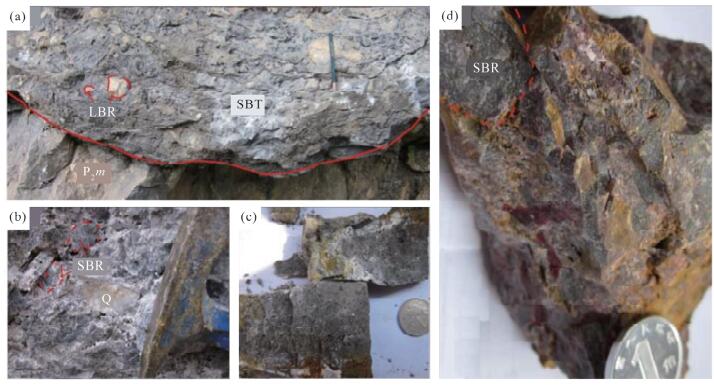
 下载:
下载:
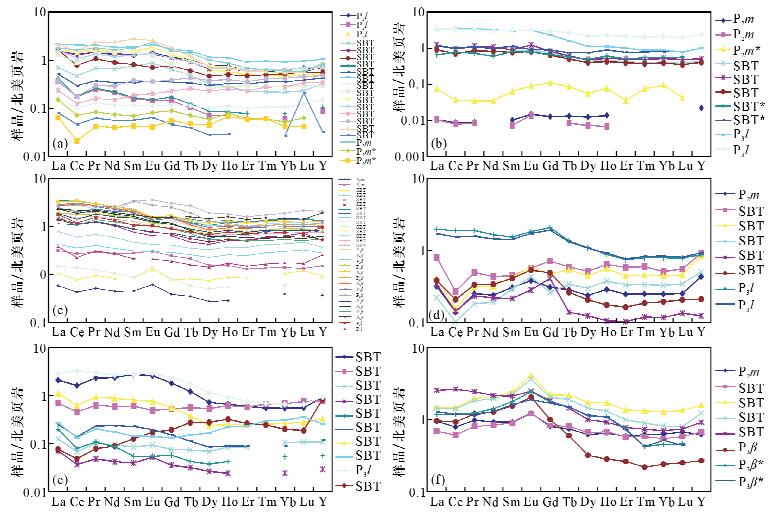
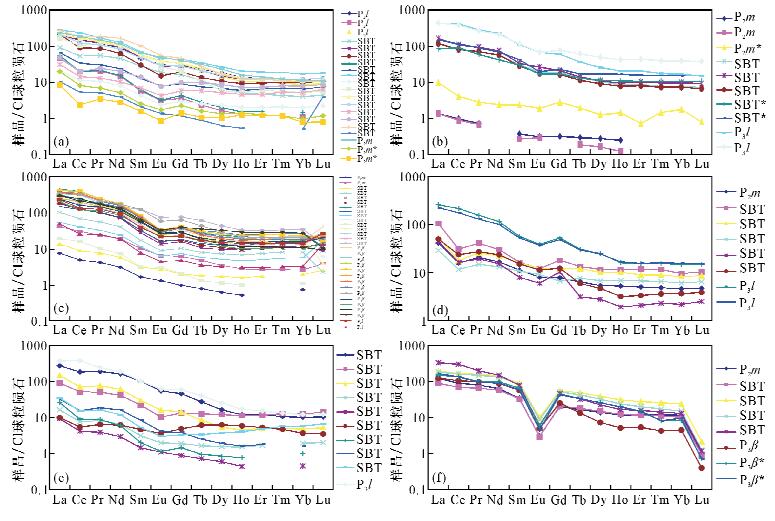
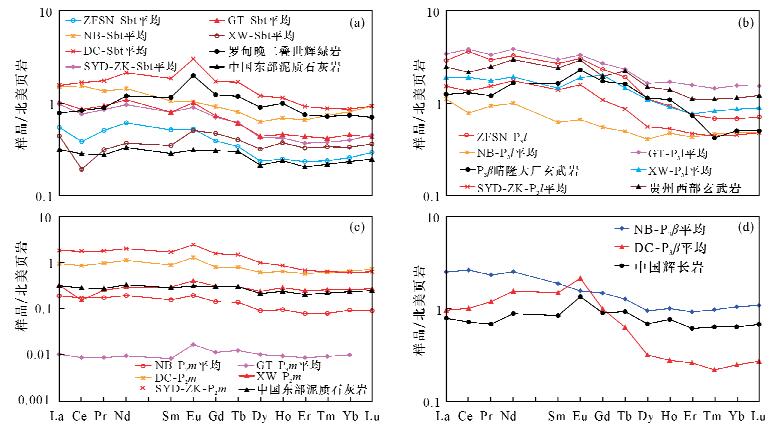
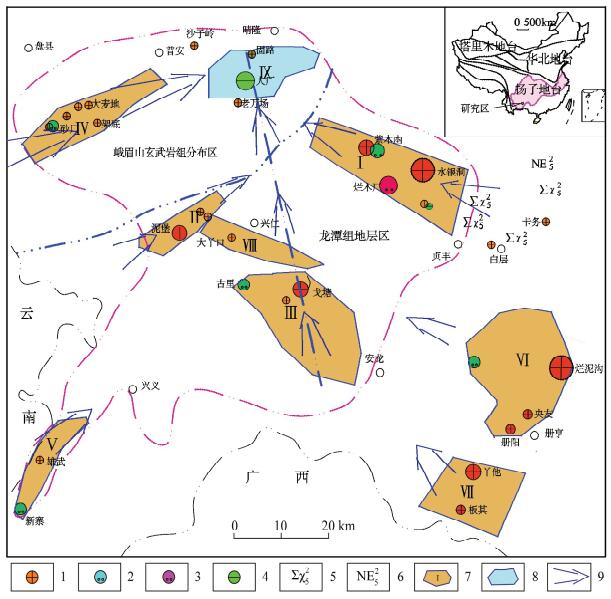
 京公网安备 11010202008159号
京公网安备 11010202008159号